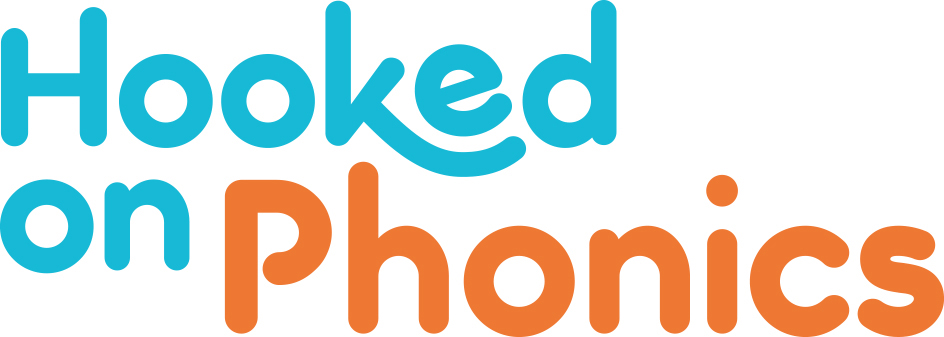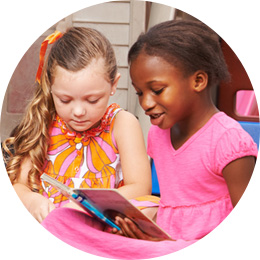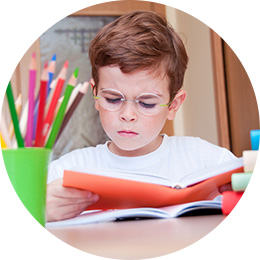Phonics, Fluency, Vocabulary, Comprehension: The ABCs of Reading in Second Grade
October 8, 2015
By the time second grade starts, most kids are able to read on their own. Often, kids and parents stop reading together often by this point—but reading out loud to your child is still a great way to help build his skills and to have fun together.
If your child is struggling to read in second grade, take action. Talk with his teacher about your concerns, and see what school recommends. Research tells us that children should be reading confidently and fluently on their own in second grade. If that’s not happening for your child yet, don’t wait. Ask school for help and information. Consider doing extra systematic work at home, either with you or through a tutor who uses research-based methods of phonics instruction like those in Hooked on Phonics products and mobile apps.
Learning to read is a huge job and it involves several key parts. Here’s an overview of what goes into the process and what you should expect in your second grade reader.
Phonemic Awareness
- Phonemic awareness is the knowledge that spoken words can be broken apart into smaller chunks of sound. These units of sound are called phonemes.
- Here’s an example: the word bat is made of three phonemes: the sounds /b/, /a/, and /t/. When kids know that these three sounds are part of the word bat, they are showing that they have phonemic awareness.
- Your child should confidently know all letter sounds. If she doesn’t, talk with her teacher if school hasn’t contacted you already.
- Reading stories out loud with lots of rhyming words helps build phonemic awareness. Dr. Seuss books are the perfect choice! Hooked on Phonics Learn to Read is a great, comprehensive program to use with your child at home.
Phonics
- Phonics connect the knowledge of sounds (also called phonemes) to letter symbols.
- Here’s an example: The letter X looks like “X” and makes the sound “ks.”
- Phonics should also be an area of strength for your second grader. She should be able to sound out words without a huge amount of difficulty.
- Write paragraphs with more detail. Spelling should be getting closer to correct on a more regular basis in second grade.
- If phonics is a struggle in second grade, it’s important to take action. Talk with his teacher, and consider doing structured practice at home using Hooked on Phonics products or mobile apps with you and/or a tutor.
- Encourage your child to take on more responsibility in sounding out and writing words, especially if the words they are working with follow phonics rules. (If she asks: “How do you spell bedroom’? “Well, what sound do you hear at the beginning? Good köpa priligy. Keep going.” If he gets stuck—like on how to write the “oo”—then help out.)
Fluency
- Fluency is the ability to read words smoothly, at a good pace, and with expression.
o Here’s an example: If a character is very excited, the reader’s voice should sound excited, too. The child should not have to stop to sound out each word; the words should flow smoothly.
- Second graders should read confidently and at a good pace. They will stumble on a few words, of course, but should be able to handle most words in a second grade level story.
- Keep reading together as often as you can.
- If fluency is a struggle for your second grader, choose stories that use predictable rhyming patterns and more simple word choices.
Vocabulary
- Vocabulary is the dictionary in your child’s mind. The more word meanings your child knows, the larger her vocabulary.
- When you don’t know what a word means, or how to sound it out, you can look for clues in the pictures or the rest of the sentence to help figure it out.
- Your child can understand many more word meanings than she can use in her own speaking and writing. Keep talking about new words and their meanings.
- Encourage your child to use a broader range of words, and encourage her to express her thoughts clearly and thoroughly. (“How was school today?” “Fine.” “Tell me more. Did anything interesting happen at recess?”)
- Read to your child often. Research shows that children’s books expose kids to a much broader range of vocabulary words than they would otherwise hear in conversation.
Comprehension
- Comprehension is understanding what a story is all about.
- Here’s an example: Being able to identify the main characters in a story, talk about what they do and how they feel, and explain what happens during the beginning, middle, and end of a story are all important parts of reading comprehension.
- Retell stories he has read, including important details, the main message or lesson. These stories are more challenging and can include fables, folktales, and factual text.
- Identify the main idea of individual paragraphs within a text.
- Tell what is similar or different in two different versions of the same story. (For example, Goldilocks told by two different authors will be presented in varying ways.)
- Keep reading out loud and talking about stories together.
- Talk with your child about what you are reading. Ask probing questions that encourage your child to explain more details or reasons for their answers.
- Have fun with this process; don’t feel like you have to drill your child with questions on every page. Just have a conversation about the parts of the story you think are interesting.






Comment (1)
Apps that help kids who struggle with phonics, pronunciation, spelling, vocabulary, comprehension, handwriting, word processing, and composition. We’ve also included text-to-speech apps, audiobook apps, and apps for organization and goal-setting.
Comments are closed.